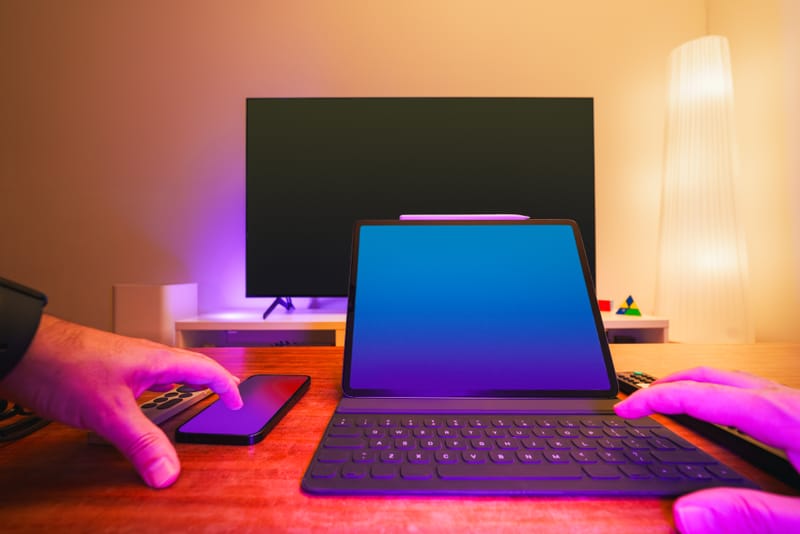Understanding the Psychology of Color in Web Design
Color is a powerful tool in web design, not only for aesthetic appeal but also for creating emotional responses and influencing user behavior. The right use of color can enhance user experience, improve usability, and drive conversions. Below, we explore the psychological impact of colors and provide insights into how they can be effectively used in web design to achieve specific objectives.
- Red: Energy and Urgency
Red is a color that evokes strong emotions such as passion, energy, and urgency. It is often used in call-to-action (CTA) buttons like "Buy Now" or "Click Here" because it increases users’ heart rates, which can lead to heightened urgency and, consequently, more conversions. However, red can also signal danger, so it should be used sparingly to avoid overwhelming users.
- Blue: Trust and Dependability
Blue is one of the most universally preferred colors and is associated with trust, security, and calm. It’s widely used by banks and social networks to promote a sense of reliability and trustworthiness. Blue is also beneficial for promoting user interaction and is known for its non-invasive qualities, making it suitable for long browsing sessions.
- Yellow: Optimism and Attention-Grabbing
Yellow, the color of sunshine, is associated with happiness, optimism, and energy. It can be used to grab attention and highlight the most important elements on a page, like warnings or special offers. However, its brightness should be modulated as it can be overwhelming if overused, potentially causing eyestrain.
- Green: Harmony and Affluence
Green is associated with nature, health, and wealth. It is the easiest color for the eyes to process and can be used to create a balanced and calming environment on a website. Darker greens are often associated with affluence and are used to promote luxury products. In contrast, lighter greens are used to evoke peace and eco-friendliness.
- Orange: Energy and Enthusiasm
Orange combines the energy of red and the happiness of yellow. It is generally seen as playful and vibrant and can be effective for calls-to-action by invoking a sense of enthusiasm and excitement. However, like red, orange can be intense if overused and should be balanced with more neutral hues.
- Purple: Luxury and Creativity
Purple has long been associated with royalty, wisdom, and respect. It stimulates the problem-solving area of the brain and is frequently used to promote beauty products, anti-aging products, and luxury goods. Lighter shades like lavender can be calming and are often used in beauty and wellness websites.
- Black: Sophistication and Elegance
Black is powerful and sleek. It can convey sophistication and elegance and is a popular choice for luxury products and high-end electronic gadgets. In web design, black backgrounds can make images and other elements stand out, creating a dramatic and highly visual experience. However, it can also be overpowering or make content hard to read if not used correctly.
- White: Simplicity and Purity
White is often associated with cleanliness, simplicity, and purity. In web design, it’s used to create a sense of space and brevity. It can help make a website look uncluttered and emphasize other elements. While effective in many contexts, too much white space can make a site appear incomplete.
- Grey: Neutrality and Balance
Grey is the color of neutrality. It can be used to tone down the emotional impact of stronger colors, acting as a balancing agent in a design. It’s also ideal for backgrounds, typography, and functional areas such as forms and footers. However, it needs to be used carefully as it can lead to dullness and lack of energy if overused.
- Pink: Romance and Femininity
Pink is traditionally associated with romance, softness, and femininity. It’s often used in products targeting a female audience, such as cosmetics and fashion websites. Lighter pinks can be soothing, while vibrant pinks can be energetic and youthful. It’s important to consider cultural perceptions when using pink in global web designs, as colors can have very different connotations in different parts of the world.
Effective Use of Color in Web Design
Understanding the psychological effects of colors is crucial, but knowing how to blend them effectively is equally important. Good web design uses color to create hierarchy, balance, and rhythm, guiding the user through the website experience intuitively.
Color combinations should be tested for accessibility to ensure that all users, including those with visual impairments, can navigate and understand your site. Tools like contrast checkers can help determine whether your color choices are compliant with web accessibility guidelines.
Moreover, cultural differences in color perception are important to consider for websites targeting a global audience. It's essential to research and understand how color meanings can vary across different societies and cultures to avoid misrepresentations and misunderstandings.
Finally, it’s vital to ensure consistency throughout your website. Maintaining a consistent color palette strengthens your brand identity and adds cohesion to your design, helping users navigate your site more easily.
By strategically leveraging the psychology of colors, web designers can create more engaging, effective, and accessible websites. Whether aiming to spark enthusiasm, evoke trust, or convey luxury, choosing the right colors can significantly enhance a user's experience and interaction with your online presence.

